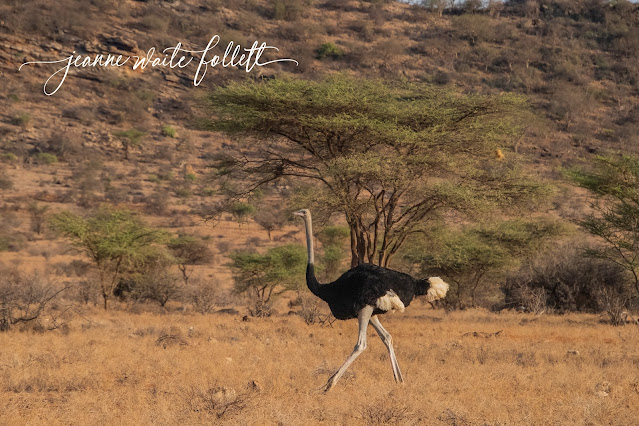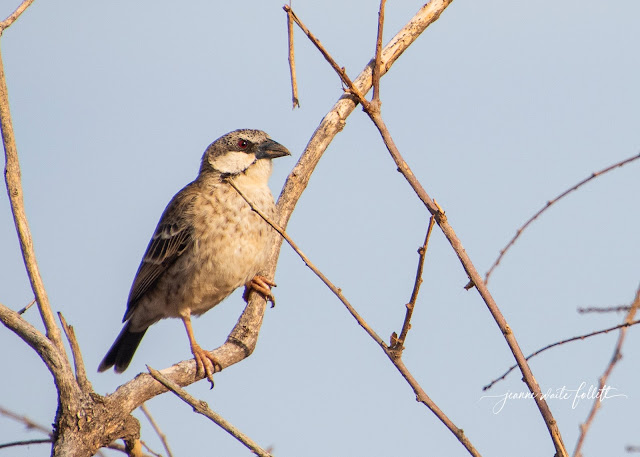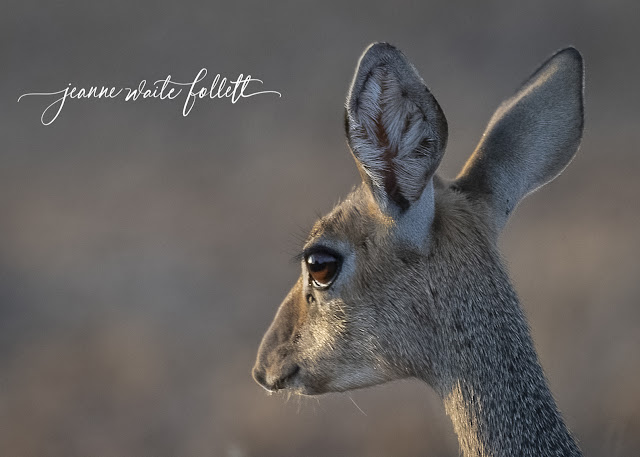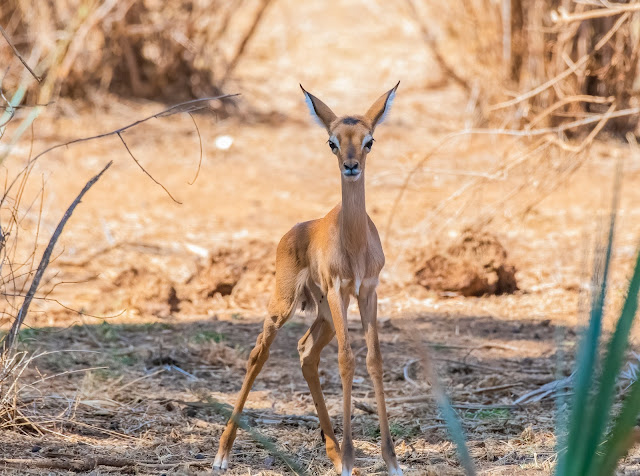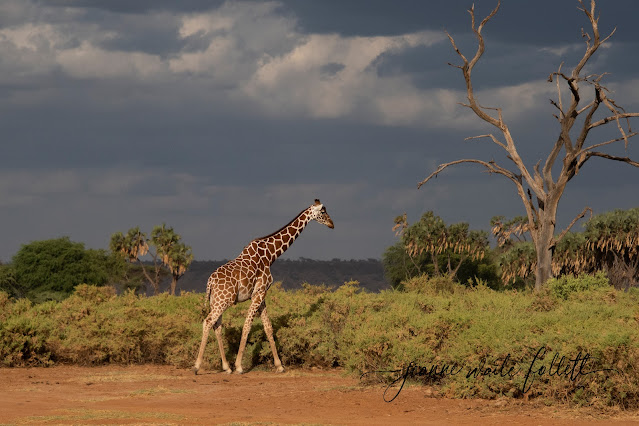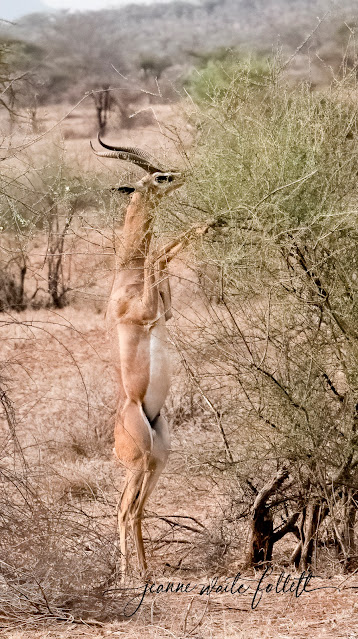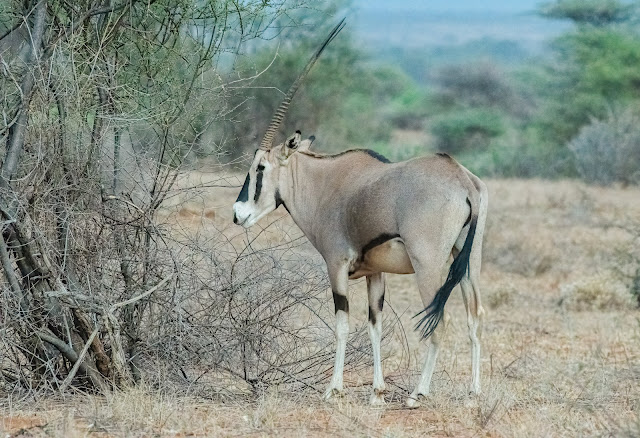Chapter 14
In Which We List Lists
I love the way a list makes a big hodgepodge of things settle down and behave.
--Blue Balliet
Sunrise on our first morning game drive since we arrived at Samburu National Reserve paints backdrop of the duom palm trees with gold as we drive the riverine forest of acacia, wild fig, and palms that line the banks of the Ewaso Ng'iro river. We wind in and around the trees, watching for animals to photograph.
Many, many years ago, a list of the most dangerous animals to hunt on foot in Africa was compiled. To me, it sounds like some barroom bragging played a large part in composing that list, which became known as the Big Five.
Google "Africa safaris" and up pops a whole bunch of parks, reserves, conservancies, lodge and camps that promise you the best chance of seeing the Big Five. They are the lion, leopard, elephant, Cape buffalo, and rhinocerous. Originally, only the black rhino was on the list but with its dwindling numbers, the white rhino was included.
The Big Five:
They say an elephant never forgets. What they don't tell is that you will never forget an elephant.
Bill Murray
“Until the lion tells his side of the story, the tale of the hunt will always glorify the hunter.”--Zimbabwean proverb
“This world without a leopard…I mean, who would want to be here?!“
-Diana Vreeland
So is the savage buffalo, especially delighting in dark places, where he can wallow in the mud and slake his thirst without much trouble.--John Hanning Speke
A charging black rhinoceros is nothing to mess with. When it is headed straight toward you, it is the ultimate exercise in sphincter control.--Boyd Norton
That's the most frequently cited list in Africa. There are also a few other lists, such as the Ugly Five, the Small Five, the Shy Five, etc.
Samburu has a list, too, and yesterday we saw four of the five on the Special Five.
Beisa oryx.
Reticulated giraffe and Grevy's zebra.
And the fifth and final, the Somali ostrich, which we saw today in the more arid grasslands of Samburu National Reserve. It varies from the usual ostrich by having a gray neck and legs, whereas the common ostrich has a pink neck and legs. During breeding time, the common ostrich's neck and legs flush to red and the Somali's neck and legs are bluish.









